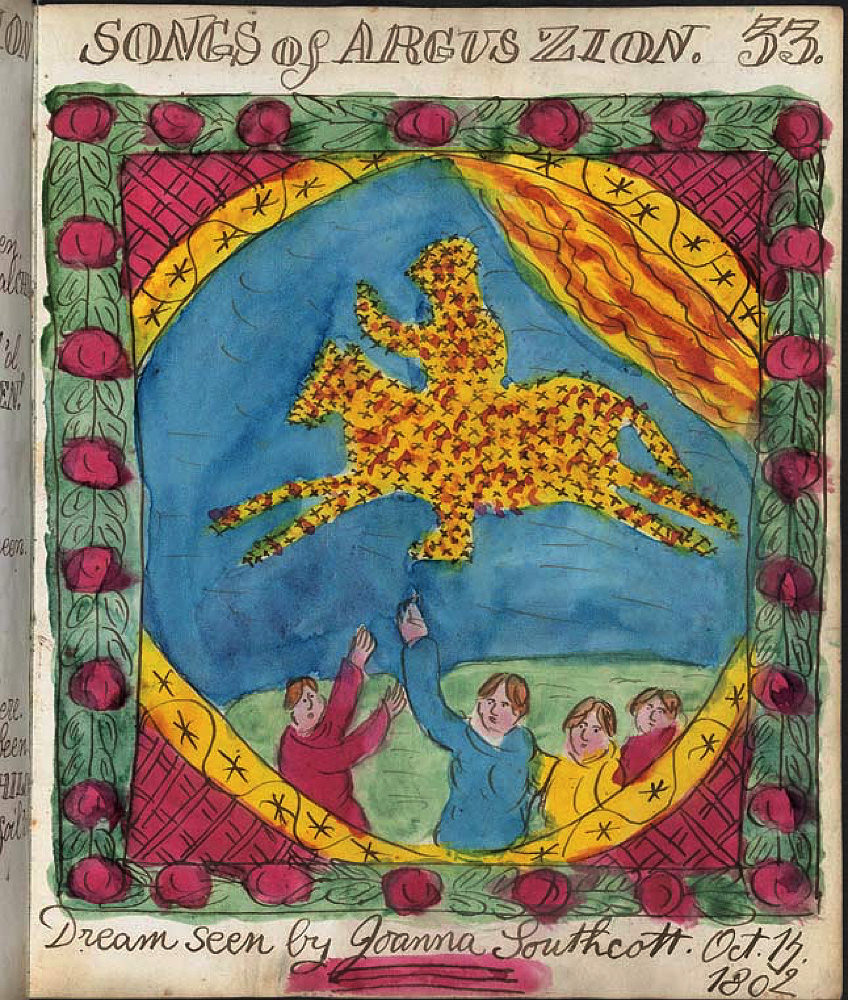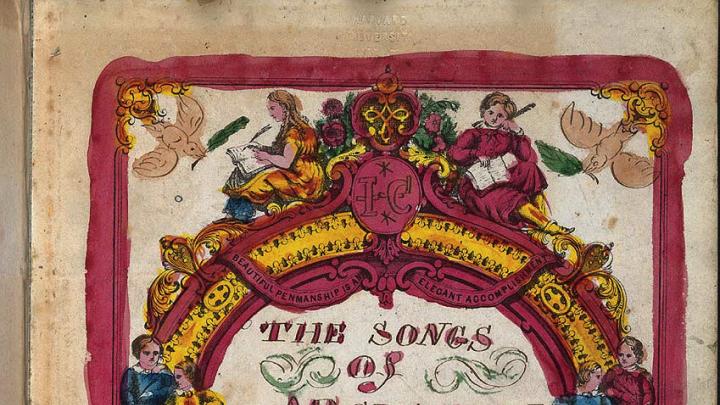Do you like a mystery? How about a treasure hunt for clues hidden in visionary dreams, spiritual lyrics, and symbolic ciphers in William Blakesque personal journals? Intrigued sleuths and scholars can visit Houghton Library to investigate The Songs of Argus Zion as a possible “map” to the whereabouts of prophetess Joanna Southcott’s chest of sealed revelations.
The Songs are stylishly arranged in a series of illustrated, handwritten journals (MS Eng 1610). The frontispieces give authorship to John “Argus Zion” [guardian of Zion] Brabham, a little-known Southcottian proponent, but the journals are signed and dated 1853-54 by George Sharp. His signatures are a close match to the journals’ script, identifying Sharp as the plausible copyist and illustrator. The journals compile more than 500 songs extolling Southcott (who had died 40 years earlier), her prospective son, “Shiloh,” and her millennialist beliefs. The strident songs are set to recognizable tunes, a puzzling farrago of sea shanties, folk songs, hymns, even “Rule Britannia,” as well as one in Masonic-like cipher. What to make of this mystifying collection?
Opposite each song appears a naïvely drawn watercolor of a dream vision with no evident correlation to the adjacent lyrics. Early illustrations of biblical prophets give way to visions by contemporary millennial artists, but also to Hamlet and Macbeth, framed by laurel roundels evocative of medieval manuscripts. The images may suggest Blake’s Songs of Innocence and Experience (1789, 1794)—and one Blake associate was the engraver William Sharp, who enthusiastically supported Southcott and tried unsuccessfully to convert Blake to her beliefs. Was George Sharp a relative?

Journal from Houghton Library/Photograph by Harvard Library Imaging Services
Houghton Library, MS Eng 1610, vol. 6, p. 33
Southcott published prophecies based on her dreams, such as “The Rider and Horse, Forming a Body of Stars” of October 17, 1802 (see right); she then sealed them until the predicted event came to pass. Self-described as the “Woman Clothed with the Sun” (Revelations 12), she gained followers who, in astonishing acts of communal conviction, desired “to be sealed” and certified for the coming millennium. In late 1813, she declared herself pregnant with the new Messiah, but the swelling proved to be a fatal disease; she died in 1814, taking her secrets with her. The sealed prophecies, reputedly stashed in a chest, have fascinated adherents and adventure-seekers for 200 years—while The Songs of Argus Zion offer an enigma of fervent millennialism in nineteenth-century England, still waiting to be unraveled.









